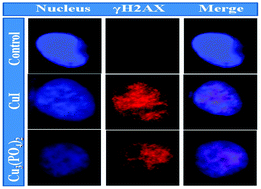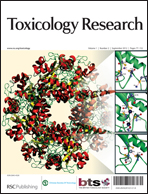Evaluation of copper iodide and copper phosphate nanoparticles for their potential cytotoxic effect
Abstract
To explore the potential biological activities of transition metal-based nanoparticles (NPs), we synthesized two copper-based NPs, CuI and Cu3(PO4)2. The structural features of these NPs were determined by the X-ray diffraction (XRD), dynamic light scattering (DLS) and transmission electron microscopy (TEM). The size of CuI and Cu3(PO4)2 NPs were 35 ± 4.2 nm and 67 ± 6.3 nm respectively as determined by TEM. Cell viability, generation of reactive oxygen species (ROS), cell cycle and induction of apoptosis were assessed on human breast cancer cell line MCF7 after the treatment of these NPs. Exposure of CuI and Cu3(PO4)2 NPs decreased cell viability in a dose-dependent manner. Also, CuI NPs produced more ROS compared to Cu3(PO4)2 and presence of N-acetyl cysteine (NAC) along with NPs increased the cell survival. Cell cycle analysis indicated that after exposure of these NPs at their respective LD50 doses increased Sub G1 and G2/M peak after 8 h and 24 h of treatment respectively. Apoptosis study by AnnexinV-FITC staining showed slight increased in the early and late apoptosis after 8 h of treatment and most of the cells were dead after 24 h of treatment. Thus our observations suggest that the exposure of these two NPs induced dose-dependent cytotoxicity on MCF7 cell that is associated with ROS-mediated apoptosis.


 Please wait while we load your content...
Please wait while we load your content...